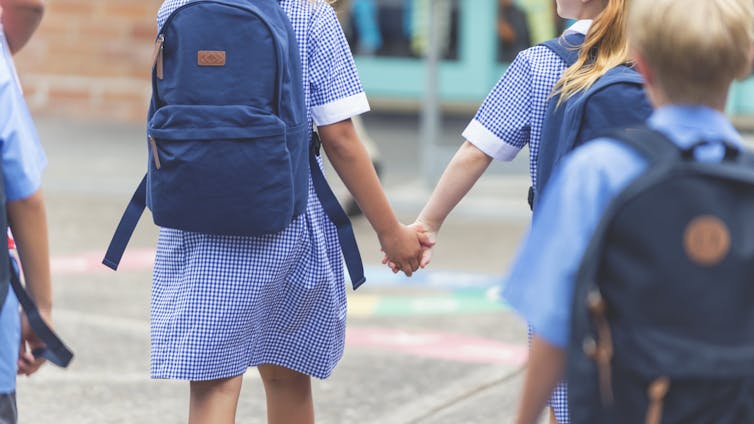
17 Jul 6 things Australia must do if it’s serious about tackling school bullying
Bullying is arguably one of the most serious issues facing Australia’s schools, write Vanessa Miller and Tony Yeigh
About one in four students between Year 4 and Year 9 report being bullied regularly. This can have serious and lasting consequences. Research suggests students who are bullied are at an increased risk of mental health problems and self-harm.
Submissions have just closed for the federal government’s rapid review into school bullying.

Here, we suggest six key areas on which governments, schools and education authorities need to focus to re-imagine Australia’s approach to tackling bullying:
1. A national approach to bullying
At the moment, there is no clear, consistent definition of bullying in Australian schools. Nor are there consistent policies.
This naturally leads to confusion about the current best practice to both prevent bullying and support students who have been bullied.
For example, there are several definitions of cyberbullying between the different states and territories.
2. Consistent data to track bullying
Australia also has no nationally consistent approach to track or measure bullying and cyberbullying.
This means it is impossible to say whether bullying is getting worse or better, or if certain parts of the country are more successfully addressing it.
We need metrics to better track, analyse, report, and respond to bullying incidents across schools, regions, states, and territories.
For years, researchers have noted that schools themselves also need accurate data to analyse, monitor and evaluate the degree to which an intervention is effective.
3. A whole-school approach
A national strategy should also prioritise whole-school approaches to bullying prevention – this is what research shows to be most effective.
A whole-school approach sees anti-bullying efforts as the responsibility of everyone connected to a school. School leaders, teachers, support staff, students, families and the wider community are all expected to promote safety and inclusion.
Addressing bullying should see strategies implemented across multiple locations, including the classroom, wider school and home environments.
This goes beyond simply dealing with individual bullying incidents as they arise.
Research also suggests schools should focus on proactive, non-punitive strategies and a positive school culture. This includes clear procedures to report bullying, effective education programs, and establishing consistent classroom and school rules.
If bullying occurs, schools can respond with a restorative approach, which focuses on repairing harm done to relationships.
Studies suggest whole-school approaches such as these can reduce bullying behaviours by 20-23% and victimisation by 17-20%.
4. Teach social and emotional skills
As part of the whole-school approach, we also need to make sure schools are teaching social and emotional skills. This includes how to identify and manage emotions as well as communicating and cooperating with others.
While it is part of the Australian Curriculum, research shows that social and emotional skills are not always taught using evidence-based, formal approaches.
A large body of research demonstrates that schools that teach social and emotional learning across all aspects of school engagement report higher academic achievement, lower rates of bullying, improved student well-being, and stronger connections between students and adults.
In part, this is because these approaches empower students to take ownership of their behaviour.
5. Training for teachers
Teachers play a pivotal role in making sure all students feel safe and supported at school, helping children and young people to understand and manage their emotions.
A 2014 study found that teachers who had participated in anti-bullying training were able to provide this support more effectively.
Teachers specifically need training that helps them provide safe, inclusive spaces for students from marginalised groups, including students with disability and young people who face homophobic or transphobic bullying.
School staff should receive consistent, culturally responsive training, so they are equipped with the most current and effective ways to support all students.
6. Give students an active role
We should also look at ways to give students a greater role in shaping anti-bullying policies.
Research shows that when students are included in decisions that affect them, it increases their engagement with learning and motivation at school.
Along with helping to make policies, students can also be involved in peer-mentoring programs and leading campaigns to raise awareness about respectful relationships. This can create a sense of shared ownership for anti-bullying interventions.![]()
Vanessa Miller, Lecturer in Education (Classroom Management), Southern Cross University and Tony Yeigh, Senior Research Associate, Faculty of Education, Southern Cross University
This article is republished from The Conversation under a Creative Commons license. Read the original article.



